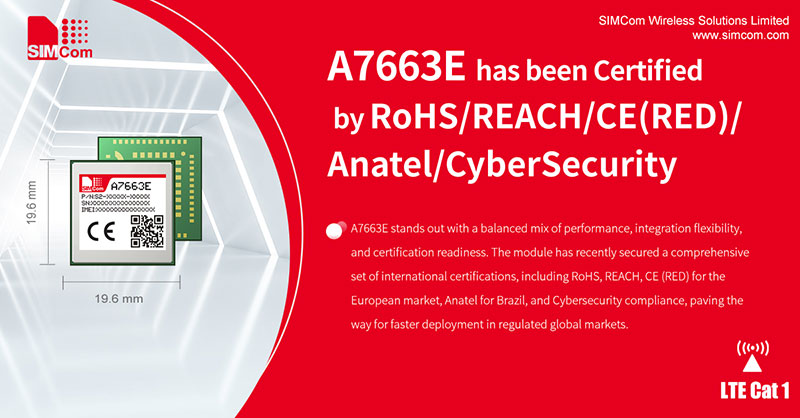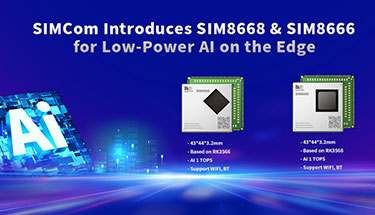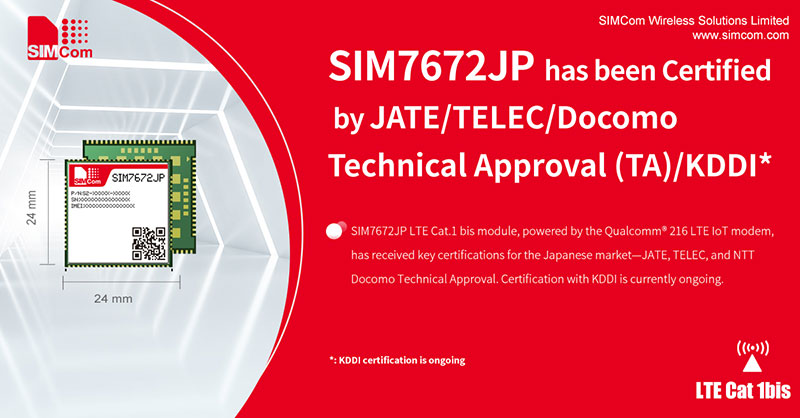- Ameya360 Component Supply Platform >
- Trade news >
- SIMCom Achieves ISO/SAE 21434 Certification for Automotive Cybersecurity Management
SIMCom Achieves ISO/SAE 21434 Certification for Automotive Cybersecurity Management
SIMCom, a global leader in IoT communication, has proudly received the ISO/SAE 21434 certification for Automotive Cybersecurity Management from TÜV NORD, an international independent third-party testing, inspection, and certification organization. This certification marks a significant milestone in SIMCom’s commitment to advancing automotive cybersecurity and delivering top-tier solutions to the automotive industry.

Importance of ISO/SAE 21434
Achieving the ISO/SAE 21434 certification underscores SIMCom's ability to meet stringent cybersecurity risk management requirements across the entire product lifecycle—from conceptual design, development, and production to operation and maintenance. This critical achievement validates SIMCom's dedication to adhering to the highest standards of automotive cybersecurity. In an era of increasing vehicle connectivity, robust cybersecurity measures are paramount. The certification confirms that SIMCom’s products are designed to safeguard against evolving cyber threats, ensuring the safety and security of in-vehicle systems and communications.
Comprehensive Automotive Solutions
In alignment with automotive industry trends, SIMCom continues to expand its automotive product lineup, offering enhanced IoT solutions to car manufacturers and Tier 1 suppliers. This strategic expansion not only strengthens SIMCom's position in the connected vehicle industry but also underscores its commitment to providing secure and reliable products.
SIMCom offers a complete range of automotive-grade cellular communication modules, including SIM7800X, SIM7805X, and SIM8800X and so on. Additionally, SIMCom provides smart modules, GNSS positioning modules, 5G modules and Wi-Fi & Bluetooth modules, delivering one-stop services to global car manufacturers and Tier 1 suppliers. These products are designed to meet diverse application scenarios, including in-vehicle communication, vehicle positioning, smart cockpits, and digital keys. The integration of various cybersecurity functions, such as encryption, authentication, and data integrity checks, ensures the security of in-vehicle systems and communications, preventing unauthorized access and data tampering.
Future Outlook
SIMCom will continue to align with market demands and industry standards, focusing on vehicle network and information security. By collaborating with industry partners, SIMCom aims to continually enrich its automotive product portfolio, offering compliant, reliable, and professional products and services. This commitment will drive the intelligent and secure development of the automotive industry chain.
Online messageinquiry
- Week of hot material
- Material in short supply seckilling
| model | brand | Quote |
|---|---|---|
| CDZVT2R20B | ROHM Semiconductor | |
| MC33074DR2G | onsemi | |
| RB751G-40T2R | ROHM Semiconductor | |
| BD71847AMWV-E2 | ROHM Semiconductor | |
| TL431ACLPR | Texas Instruments |
| model | brand | To snap up |
|---|---|---|
| STM32F429IGT6 | STMicroelectronics | |
| BP3621 | ROHM Semiconductor | |
| TPS63050YFFR | Texas Instruments | |
| IPZ40N04S5L4R8ATMA1 | Infineon Technologies | |
| ESR03EZPJ151 | ROHM Semiconductor | |
| BU33JA2MNVX-CTL | ROHM Semiconductor |
- Week of ranking
- Month ranking
Qr code of ameya360 official account
Identify TWO-DIMENSIONAL code, you can pay attention to


Please enter the verification code in the image below:


























